There are few rivalries that have endured longer than the one between Indian and Harley-Davidson. Indian “Motocycle” was first out of the gate, producing motorcycles in Springfield, Massachusetts, starting in 1901. H-D followed in 1903 at its home in Milwaukee and has remained in continuous production for 120 years.
Indian ceased production in 1953 after various struggles in the years following World War II, relaunching unsuccessfully several times during the ensuing decades until finally gaining solid footing in 2011 when Polaris Industries took over the marque. H-D also experienced its share of uncertainty, especially during the years of AMF ownership from 1969 to 1981.
Today, both companies are productive and profitable, with the MoCo remaining the dominant player in American motorcycling. The fascinating story of how these revered marques have battled each other through the years is penned by Kip Woodring, the author of our ongoing Early Rider series. We begin with the formative first three decades, and we’ll follow up with the rest of the tale in future issues. History lessons are rarely this interesting! –Ed.
Related: Early Rider: 1900-1917
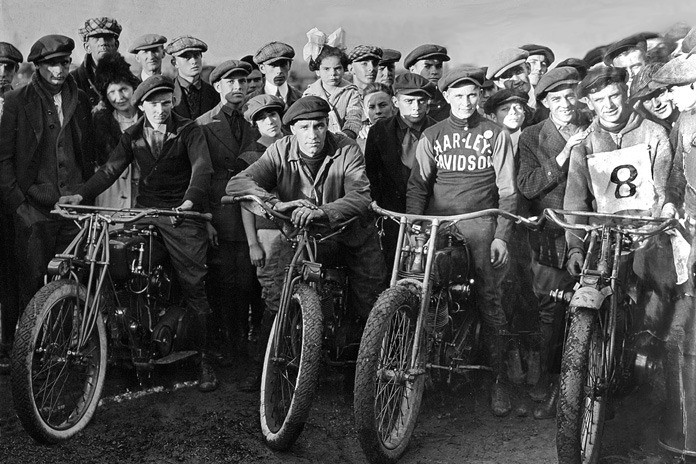
1900-1914 – The Troops Assemble | Harley-Davidson vs Indian
The world was dramatically changing as the 20th century approached, especially in the realm of transportation. Steam-powered ships and trains had been shuttling the masses, but personal transportation was typically done with two feet or four hooves. It was a revelation when the “safety bicycle” was introduced in the late 1800s.
The advent of the internal‑combustion engine changed everything, and concepts of speed had to be reset. Nothing illustrates this tectonic shift in perception better than when, in 1903, ex-bicycle racer Barney Oldfield became the first person to travel faster than 60 mph in an automobile. At the time, some people thought speeds so high might kill a man by sucking air out of his lungs. The stage was set for the motor age.
When Oscar Hedstrom and George Hendee met, Hendee was a retired bicycle racer and businessman who was promoting his Silver King bicycles, while Hedstrom was a gifted engineer who was building powered pacers for bicycle races. Soon after, the two combined talents and introduced Indian motorcycles. Hedstrom’s design of both motor and cycle was original and outstanding. Hendee chose Indian as the company name to indicate the machine was a native product and owed nothing to any other nation.
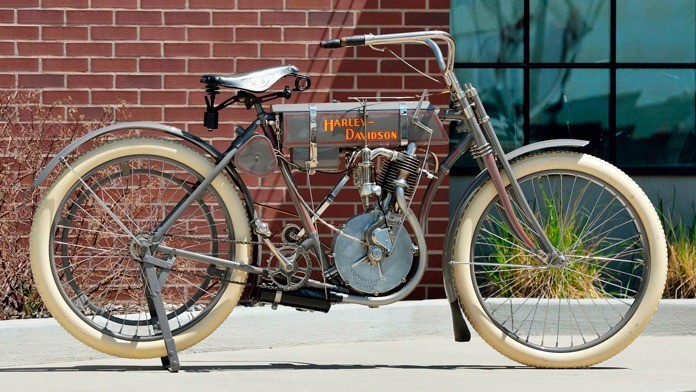
A year or so later, four young men from Milwaukee built a prototype single-cylinder motorcycle, which turned out to be unviable. They tried again with one that was, and Harley-Davidson was born. The main features were a robust loop frame and an oversized single-cylinder engine.
To get on the moto bandwagon and make quick profits, most manufacturers at the time simply assembled components sourced from other companies. Hundreds of manufacturers pursued this slapdash motorized-bicycle approach, with little thought for design and quality construction. It was not sustainable in the long run.
Indian’s development was phenomenal, growing from three machines in 1901 to the largest manufacturer in the world by 1911. It built 2,176 motorcycles in 1907. Harley-Davidson was also growing but only built 450 bikes in 1908. No one else was even close.
Indian Innovates | Harley-Davidson vs Indian Motorcycle
While H-D evolved, Indian revolutionized. Within a decade, Hedstrom pioneered rear suspension, V-Twin engines, keystone frames, electric lighting, chain drive, 4 valves per cylinder, and more. Hendee found investors to grow the company, building a huge factory and promoting the motorcycles with vast ad campaigns, promotions, and competition, mostly the type that proved reliability and durability.
Outright speed would come soon enough, especially in the form of Hedstrom’s 8-valve production racers, the first in the world. Indian scored a 1-2-3 finish in the 1911 Isle of Man Tourist Trophy races. In 1914, Erwin “Cannon Ball” Baker rode an Indian across America in just 11.5 days.
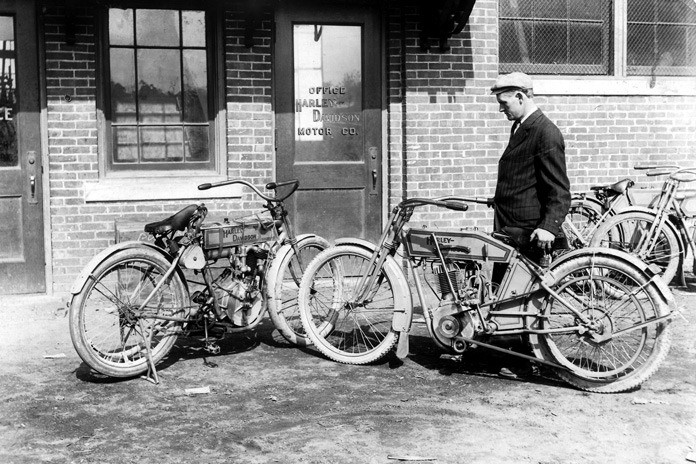
The year 1913 was the best one yet for American motorcycle production, with 71,000 units sold. Indian held a 41% market share after producing 31,000 motorcycles. H-D trailed with 13,000, followed by Excelsior (11,000), Flying Merkel (10,000), Thor (6,500), and Pope (5,000). Various other manufacturers produced the remainder.
In 1913, Hedstrom resigned from Indian because investors had taken control of the company and decided to “water” the stock for greater short-term profits.
Meanwhile, H-D’s Bill Ottaway fielded the best-organized and best-equipped racing team of the time and soon dominated at the track. Trade journalists collectively named his riders and machines the “Wrecking Crew.” The nickname stuck to every dominant race team from Harley or Indian from then on.
1915-1918 – War Years | Harley-Davidson vs Indian Motorcycle
The Lusitania was torpedoed by the Germans in 1915, resulting in a loss of 1,200 lives, many of them Americans. From that day, our nation was on a war footing, including our motorcycle industry. The Big Three manufacturers – Indian, Harley‑Davidson, and Excelsior – supplied motorcycles, as well as other goods and services, to support our war efforts.
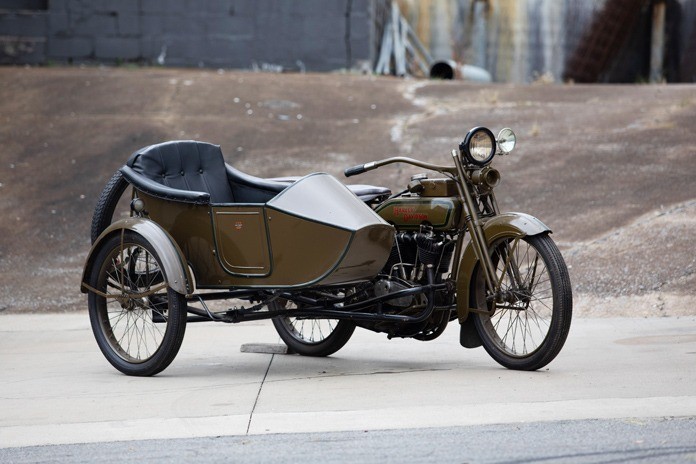
Indian overdid it, pledging virtually all its production to military aid without proper costing, and a lack of supply to dealers cratered customer sales. Hendee was powerless to prevent this, so he retired in 1916. Ignaz Schwinn and his Excelsior brand weathered the storm with small contributions. Harley and the Davidsons were shrewd, keeping the government and its dealers happy while increasing consumer market share.
Motorcycle manufacturers were dealt a blow when affordable automobiles became widely available. Harley-Davidson and Indian had a production capacity of 30,000 machines a year, but they dropped to less than half that in 1919.
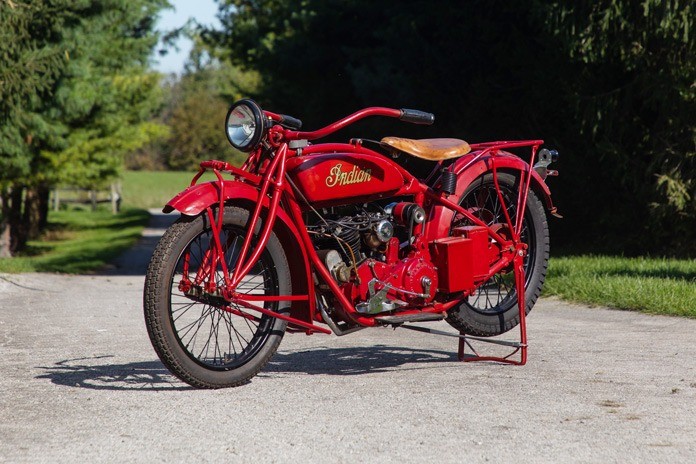
Scouting the Future | Harley-Davidson vs Indian Motorcycle
A pivotal moment arrived in 1920 with the introduction of Charles Franklin’s Indian Scout – America’s first integrated, modern design. It wasn’t a racebike but could be raced, and it wasn’t a touring machine but would take you anywhere.
Related: Making Their Marque: Charles B. Franklin and Indian Motorcycle
The Scout had 60% of the displacement of a Big Twin, yet it could run 75% as fast and weighed 100 lb less. Overengineered, totally reliable, and easy to work on, it became the best American motorcycle of its era. The industry switched emphasis from utility to recreation, and a year later, Indian debuted the Chief, an enlarged version of the Scout.
Harley Hits Back | Harley-Davidson vs Indian Motorcycle
Harley-Davidson introduced the first “74” in 1921, and in 1922, H-D surpassed Indian as the largest manufacturer in the world. Then Ford dropped the price of a Model T from $370 to $325 due to assembly-line efficiencies, which made motorcycles relatively expensive. Harley slashed prices in response, but the price of a 61ci V-Twin was $335 and a 74ci Twin was $360.
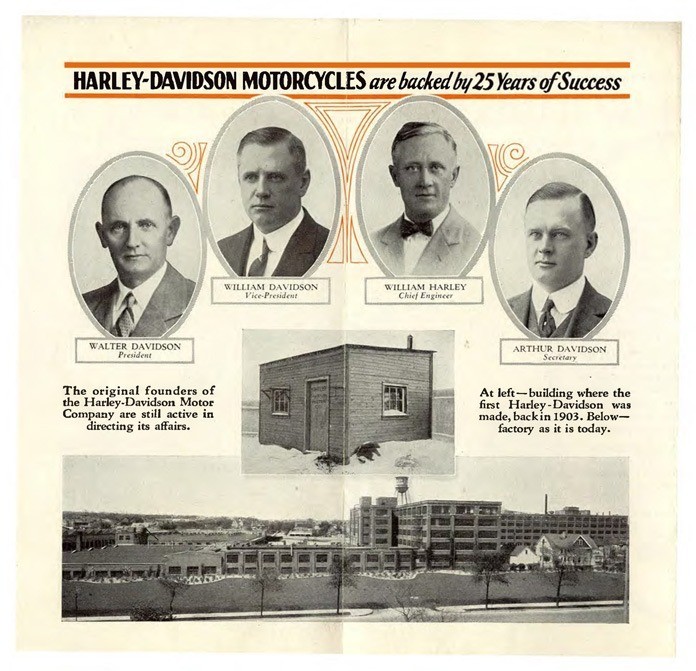
Indian pricing was commensurate, but buyers were scarce. Potential customers had to be rabid enthusiasts with above-average disposable income to consider a motorbike, so sales dramatically tailed off, though things improved gradually through most of the rest of the decade.
Both companies exported 45‑55% of their machines to countries where cars were rare and motorcycles provided basic transportation. Both offered sidecars and three-wheelers in various configurations to boost carrying capacity and overall utility in an effort to stem the tide of the ever-cheaper and more practical automobile. The war between the marques became a battle for survival.
Racing Ahead | Harley-Davidson vs Indian Motorcycle
The early marketing value of racing was to prove durability – up hills, cross country, through the woods, round and round, and farther and farther. As racing evolved, speed became the goal, and spectators enjoyed the thrill of seeing riders push the limits of man and machine, sometimes with lethal consequences.
The opening round of the racing war between the Big Three happened in 1919 at Ascot in California, where 16 machines started the race and only eight finished. Bill Ottaway and his H-D racing team came prepared and walked away with the top five placings.
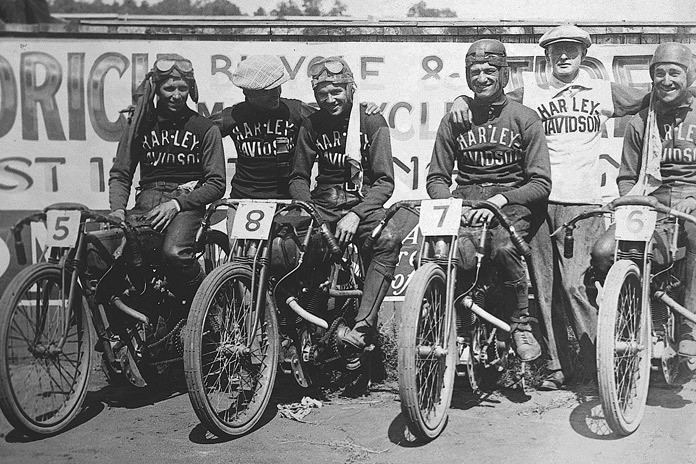
Bill Harley and Ottaway had secretly contracted help from a Brit named Harry Ricardo, the leading expert in engine efficiency at the time. The Indian 8-valve racer designed by Hedstrom almost a decade earlier was intended to solve a different problem: heat build‑up and valve failure on long races. Reliability was the primary goal, and any extra speed was a bonus.
The Ricardo Harley racers, both F-head and 8-valve, went after better breathing and got it. Treated as a secret weapon by the factory, H-D kept these machines in reserve for factory riders, whereas Indian sold its racebikes to anyone who wanted one. Indian desired saturation at the track, and H‑D wanted to field ringers in major competitions.
Then there was the spectacle of high-speed boardtracks. In 1922, the pole position at the Indianapolis 500 went to Jimmy Murphy in his Duesenberg at 100.5 mph. The same year, on the Beverly Hills boardtrack, Jim Davis clocked 110.7 mph on an Indian 8-valve Twin.
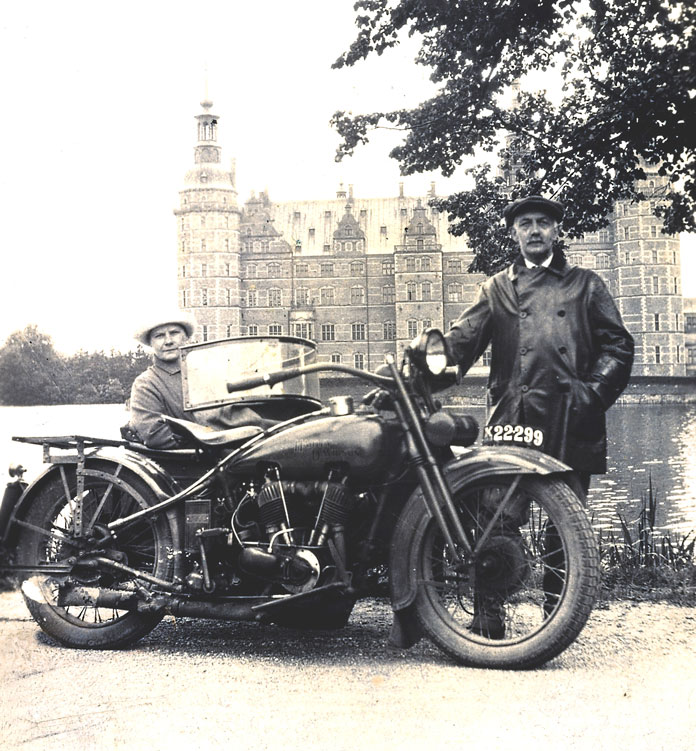
Harley’s success on dirt tracks had a surprising outcome when the company lost interest in it from 1922-25 and again in 1928. With no factory team to oppose them, Indian did well. In fact, the Wigwam won all the championship races in 1928 and 1929.
Motorcycle Evolution | Harley-Davidson vs Indian Motorcycle
The Big Three had to push hard to seduce customers who wanted what automobiles couldn’t provide – to go where cars couldn’t go and love every minute of it. In 1925, Excelsior sprung its surprise entry into the sport with a whole new class of machines: the Super X Forty-Five (750cc) with IOE (inlet over exhaust), or F head, cylinders. It altered the notion of mid-sized performance motorcycles during its six-year run.
Indian and H‑D responded with even more sporting middleweights: the Indian Scout 101 in 1928 and the Harley D-series in 1929. Both were 45ci Flatheads, but the Scout 101 became the pinnacle of sporting machines in the Roaring Twenties.
Meanwhile, Harley’s Big Twin J series was refined and developed, transforming from a sidecar hauler to supersport status when it culminated in 1928 with the two-cam 74ci JDH. The result was all-conquering performance.
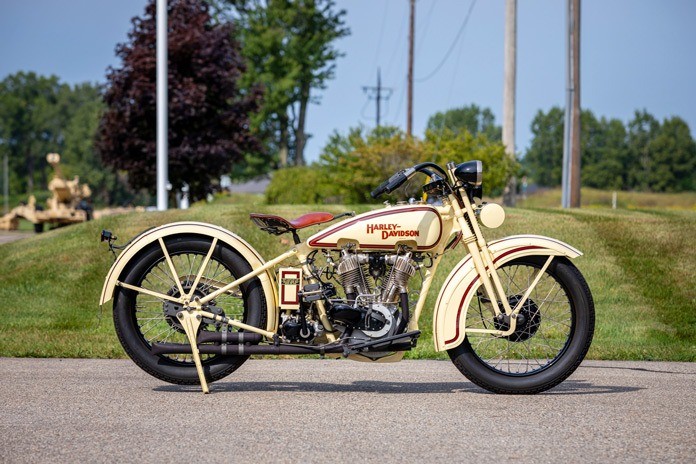
These massive road burners were expensive and would outrun practically anything, but they required anti-knock fuel to do it, flung oil everywhere when run hard, and overheated when run long. It was the end of the road for IOE performance, but the JDH capabilities would be talked about in reverence for decades afterward.
Thinning The Herd | Harley-Davidson vs Indian Motorcycle
An already marginalized industry saw the bottom fall out when the full force of a global depression hit hard in 1929 – so hard that the founders of H-D had to lay off workers and took a 50% cut in salary themselves. In one fell swoop, most riders were taken out of the market for new motorcycles.
Under these grim circumstances, Schwinn couldn’t see any future for Excelsior-Henderson and famously bailed out on March 31, 1931. Overnight, the Big Three became only two. The same year, the British knee-capped H-D and Indian export sales via a punishing tariff on machines sold in subject countries.
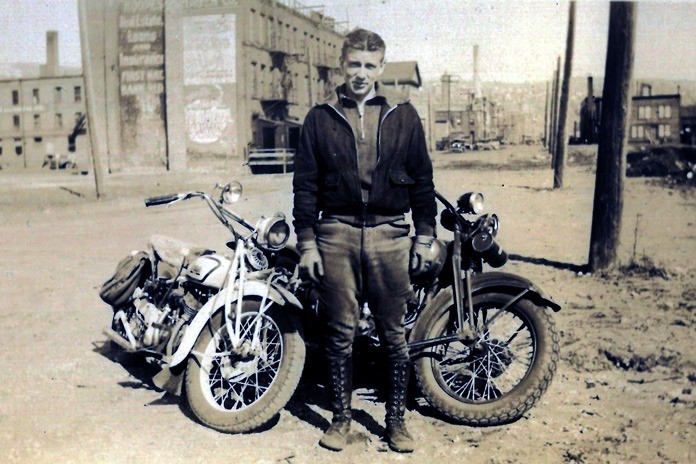
As Harley-Davidson battened down the hatches and prepared to weather the storm, Indian had a white knight come to its rescue in 1930 when E. Paul duPont took over the beleaguered company.
The battle for supremacy in American motorcycles is a bigger story than what we could fit into this issue – as you know, it continues to this day. Stay tuned for the continued saga of how the revered brands emerged from the Great Depression and the upcoming World War.
Continue reading: Harley-Davidson vs Indian Motorcycle Part 2


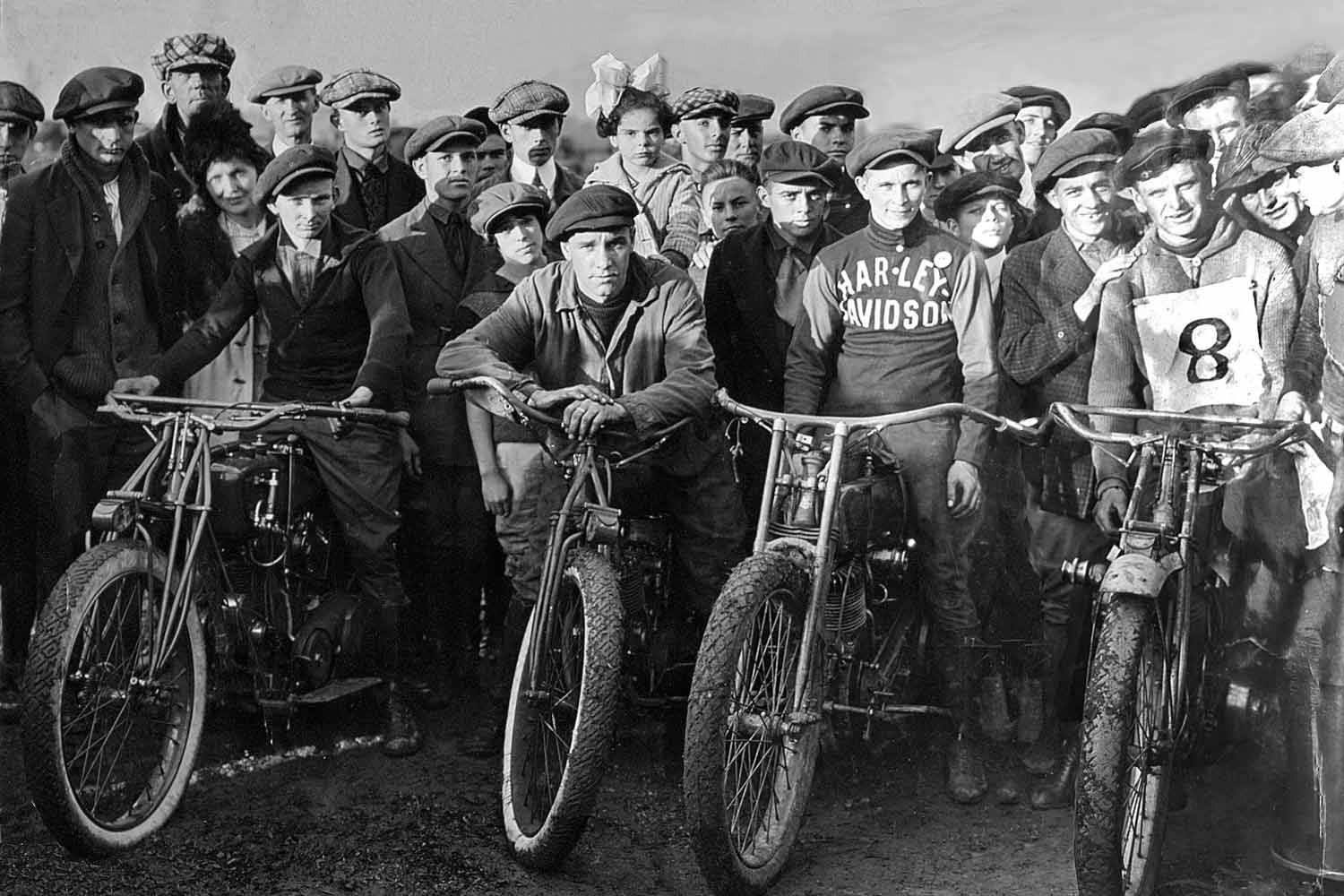
















Excellent history of machines in the earlier years I’ve been riding since age of 12 my father bought me my first one a 2 stroke bultaco but I forgot to mix oil in gas and blew the motor. He said next time I can buy my own which was a 350 Yamaha 305 Honda dream after navy tour I bought my first Harley 1981 AMF roadster. Had a road glide but after heart surgery I couldn’t hold it up so I downsized to a 1200 sportster been riding it regularly